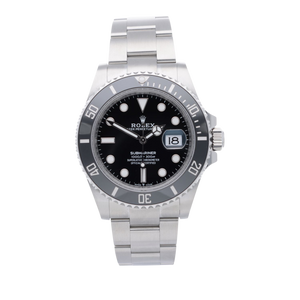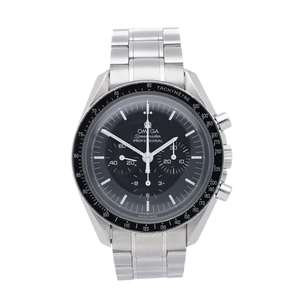The History of Time: How it Came to the Wrist
The alarm goes off at 7 a.m., we head to the office at 8:30 a.m., and soccer practice at 7 p.m. – our daily routine is precisely timed. But how did this time, which determines our daily lives, come about? And how did it end up on our wrists? Below, you'll learn how long it actually took to knowing "what time" it is and how we always keep track of time.
Dates then and now
Inviting friends or family over for dinner these days is easy. You give them a time, and the guests are already standing at the door as soon as everything is ready. But how exactly did it work before clocks? Back then, people based their timing on external factors, such as the position of the sun, or they arranged to meet "at dusk" or "at rooster crow." Depending on how you interpreted this phrase, the food might not be ready, it might already be cold—or the date might have already left. People just didn't take it so seriously.

Time has its origin in the monastery
The Babylonians already divided day and night into twelve periods, although exact times have existed for a relatively short time. The strict division of the day originated in monasteries, where the ringing of the hours set the pace for the monks and nuns during their work and prayer periods. This was eventually adopted by cities, where the ringing of public hour bells, for example, signaled the opening and closing of city gates, while church bells announced the upcoming mass. The length of the hours was based on candle, water, or sundials and varied according to location and time of year. The sundial was invented by the ancient Egyptians around 5,000 years ago. It is circular with several time periods. However, time measurement was only possible during the day in sunlight. The water clock, like the hourglass that followed it and the so-called wheel clock from the 14th century onwards, was independent of the time of day. The wheel clock already contained the first basic elements that can still be found in mechanical clocks today: It had a balance wheel, a not quite as accurate precursor to the balance wheel used today.
Creation of a precise time
The development of precise time only began in the 14th century. At that time, mechanical clocks and striking mechanisms made their way from Italy all over Europe. This meant that every citizen could find out what time it was, until what time they were allowed to work, or when they had to leave for an appointment. Mechanical clocks initially had a deviation of 15 minutes per day. Over the following decades, however, they became increasingly more precise. However, the time varied from city to city, so that each individual location practically represented its own time zone. There was no one correct time. As unbelievable as this may sound today, these differences rarely caused problems. Since moving from one city to another was only possible by long journeys, the time deviation was rarely significant.

Business demands uniformity
This changed, however, in the 18th century, when calls for synchronized time grew louder due to increasing trade and traffic. A universally valid time was essential, especially for the postal service, in order to be able to deliver shipments as agreed. The factories of the industrial age ultimately marked the end of vague timekeeping. Time became an economic resource, and public clocks with precise minute and second displays became widespread. A binding, uniform time has only existed in Germany since 1893. This was made possible by the railway, whose timetables had to be determined down to the minute. Synchronizing the entire country was therefore essential, and this marked the milestone for the modern world with exact timing as we know it today.
Time always with you
The invention of the wristwatch was of course enormously helpful in keeping up to date with the correct time and keeping important appointments. Nowadays it is quite natural to wear it on the wrist, but the timepiece for the arm has actually only existed for about 200 years. In that time it has undergone considerable development. Once time had become so important, pocket watches came onto the market. Initially they were made by metalworkers, as there were no watchmakers at that time. The new timepieces were quite large and usually attached to chains or ribbons. Men wore them in their vest pockets, women around their necks. At first, however, they were expensive luxury items and only available to the nobility, and ordinary citizens had to continue to use town bells and other indicators for directions.

From the pocket to the hand
When the balance wheel and hairspring were invented in the 15th century, it became possible to build more precise clocks and make cases smaller. In 1812, at the request of Queen Caroline Murat, Napoleon's sister, Abraham-Louis Breguet produced the first known wristwatch. However, this new type of watch took time to gain acceptance in society. It was not until the end of the 19th century that many women opted for wristwatches. At that time, men still preferred pocket watches; the wristwatch was considered "effeminate" - but for them too, it was to be the watch form of the future. At some point, however, men also realized that it was sometimes somewhat impractical to have to take their watch out of their pocket every time to read the time. Performing an activity with both hands was a difficult, if not impossible, task. For this reason, Louis Cartier designed the Cartier Santos, the first wristwatch for men, in 1904. It is named after his friend, the aviator icon Alberto Santos Dumont, who had no way of checking the time while flying. Thus, the first timepiece in the popular pilot's watch category was born. Santos remains a central and extremely popular Cartier collection today. The first German wristwatch was a "Darling" by Thiel in Ruhla, Thuringia, and was launched in 1912.












